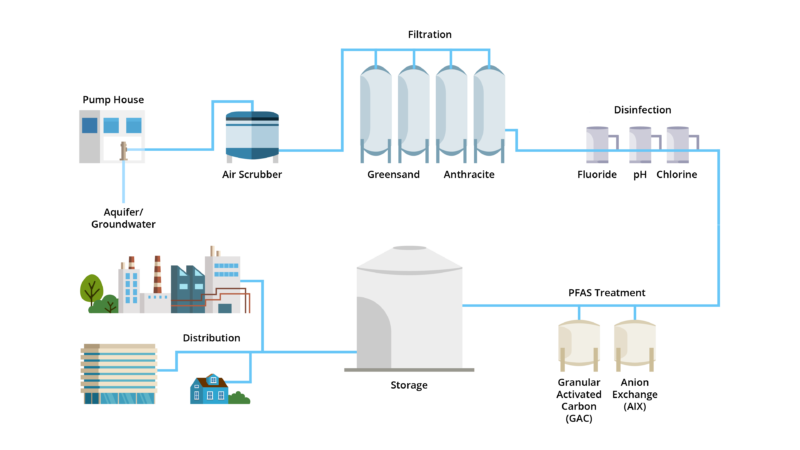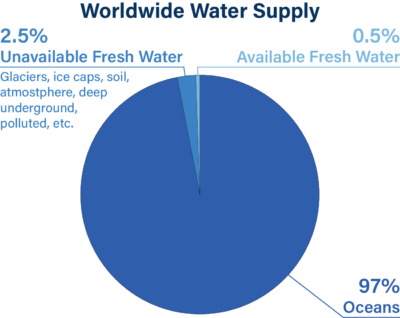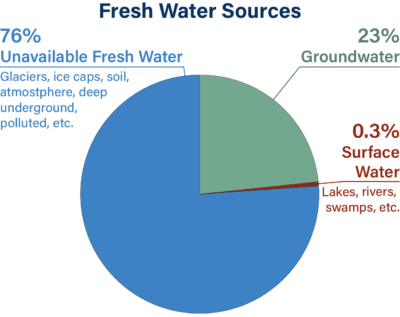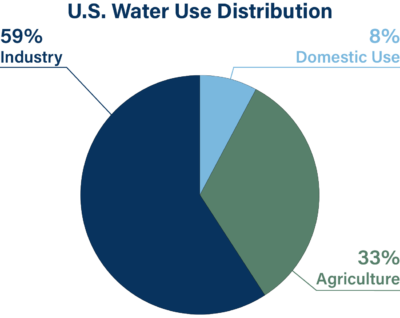Groundwater: Making the Invisible Visible
Celebrating World Water Day 2022
World Water Day is an annual United Nations observance on March 22nd, every year since 1993, that celebrates water and raises awareness of its importance as well as the 2 billion-plus people currently living without access to safe water. World Water Day seeks to inspire action towards everyone having water and sanitation by 2030.
This year’s theme is “Groundwater: Making the Invisible Visible.” Groundwater is a critical resource, and even though we can’t see it, it impacts our lives in many ways.
Groundwater: A Critical Resource
Groundwater is, quite literally, the water beneath our feet. Groundwater fills the cracks and voids beneath the surface, creating geological formations known as aquifers.
Once groundwater is pumped from a well or wells, it goes through a series of steps for treatment. (The specifics of these steps vary depending on your region in the country, the time of year, and several other variables; this is a typical Northeast U.S. process.)

- An aeration unit or air scrubber removes unwanted gases from the water.
- Several types of filtration media, such as Greensand and anthracite, remove and filter soluble iron, manganese, hydrogen sulfide, arsenic, radium, etc. from the water.
- Disinfection involves adding fluoride to the water to prevent tooth decay, balancing the pH, and adding sodium hypochlorite (commonly called hypo, or chlorine) to eliminate bacteria, viruses, and microorganisms that cause disease and illness.
- The water is then treated to remove per- and polyfluoroalkyl substances, commonly known as PFAS. The current most reliable treatment for PFAS uses a combination of granular activated carbon (GAC) and anion exchange (AIX).
- Treated water is then stored in multiple tanks and facilities throughout the distribution system, ready for use in residential, commercial, or industrial settings.
While about 71% of the Earth’s surface is covered in water, only 0.5% of that water is available fresh water. Most of that available fresh water is groundwater; over half the people in the U.S. get their drinking water from groundwater.
 .
. 

Groundwater is a finite resource, but the demand for water grows every year as populations expand. In addition to population growth, water utilities face the challenges of human impact: everything from road salt in the winter to household chemicals emptied into a residential septic system has the potential to contaminate the very groundwater the utility relies on to provide fresh, clean, safe drinking water to every home and business in their area.
Protecting and Conserving Groundwater
We can take several steps – both individually and as groups – to protect and conserve groundwater.
As individuals, we can be aware of our personal water use. Commit to taking shorter showers, turning off the faucet when brushing our teeth, and seeking out low-flow appliances when the time comes to replace a shower, sink, or toilet. We can also spread the word to our social circles – there’s nothing like word-of-mouth when it comes to raising awareness!
As groups, we can advocate for change within our workplaces and at the local, regional, and national levels. As a society, it’s difficult to change behavior until we understand cause and effect; and the general public does not know much about where their drinking water comes from and how dependent we all are on groundwater. Once the public is unified in their decision to protect and conserve groundwater, it becomes much easier at a state and federal level to do so.
In addition to educating their population, water utilities can conduct water audits to understand where their water is going. Many states set goals to reduce non-revenue water (NRW) and unaccounted-for water (UFW); strategies often include identifying and upgrading inaccurate meters.
(More information available in our article on non-revenue water; we also recommend the American Water Works Association’s free water audit software tool, available on their website.)
Making an Impact
Ultimately, one or two people within a population committing to a change may not have a large overall impact; but when you can get an entire population working together, you can make significant local change.
This World Water Day, we’re asking everyone to step up to the challenge of protecting and conserving groundwater. Choose any (or many!) of the following actions to take over the next year – and tell your social circles that you’re doing it. (On social media, use the hashtag #WorldWaterDay to make the biggest impact!)
- Commit to reducing your personal water use with shorter showers and other water-saving techniques.
- Updating your kitchen or bathroom, or just replacing an older appliance? Seek out a low-flow option.
- Water use spikes in the summer when high temperatures mean lawns need watering. Consider overseeding with a low-water eco-mix – or even better, with native plants which typically require little to no water once established.
- If your home has a septic system, be aware of what you’re pouring down the drain. Take the time to properly dispose of your household chemicals; check your town’s trash and recycling department website for guidelines.
- With your coworkers, petition your employer to implement water-saving best practices within your workplace. Volunteer to research and draw up a list of recommendations or otherwise participate in the planning and implementation.
- At the local level, petition your town to conduct regular water audits. Improving a water distribution system’s efficiency isn’t just good for conservation, it’s financially savvy – recouping lost revenue from inaccurate large commercial & industrial meters, etc.
By working together and committing to action at the individual, local, and national level, we can educate the public and enact meaningful change to protect and conserve groundwater for future generations to come.
Videography by Jon Washer; video editing by Seth Bender.